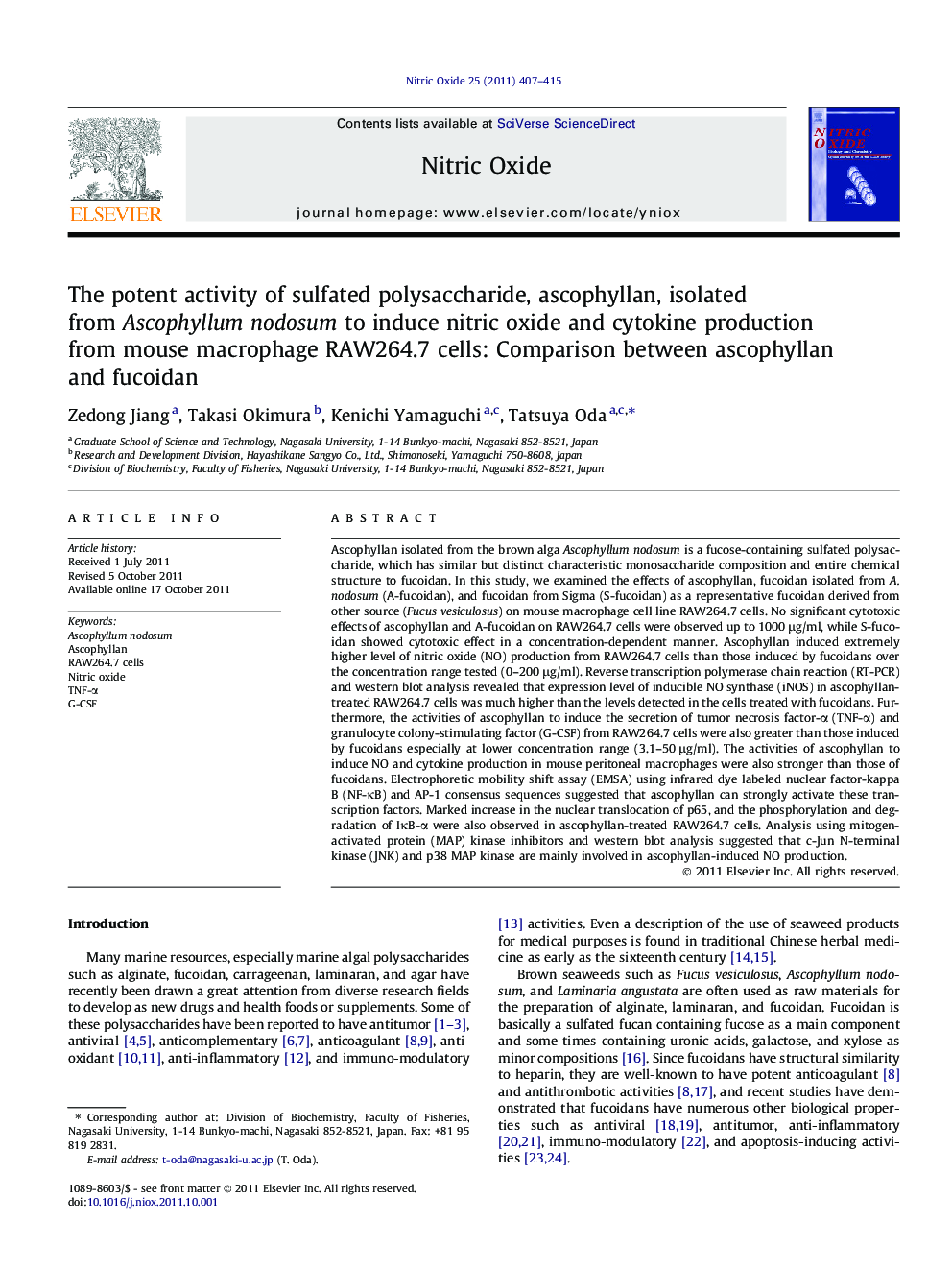| Article ID | Journal | Published Year | Pages | File Type |
|---|---|---|---|---|
| 2001218 | Nitric Oxide | 2011 | 9 Pages |
Ascophyllan isolated from the brown alga Ascophyllum nodosum is a fucose-containing sulfated polysaccharide, which has similar but distinct characteristic monosaccharide composition and entire chemical structure to fucoidan. In this study, we examined the effects of ascophyllan, fucoidan isolated from A. nodosum (A-fucoidan), and fucoidan from Sigma (S-fucoidan) as a representative fucoidan derived from other source (Fucus vesiculosus) on mouse macrophage cell line RAW264.7 cells. No significant cytotoxic effects of ascophyllan and A-fucoidan on RAW264.7 cells were observed up to 1000 μg/ml, while S-fucoidan showed cytotoxic effect in a concentration-dependent manner. Ascophyllan induced extremely higher level of nitric oxide (NO) production from RAW264.7 cells than those induced by fucoidans over the concentration range tested (0–200 μg/ml). Reverse transcription polymerase chain reaction (RT-PCR) and western blot analysis revealed that expression level of inducible NO synthase (iNOS) in ascophyllan-treated RAW264.7 cells was much higher than the levels detected in the cells treated with fucoidans. Furthermore, the activities of ascophyllan to induce the secretion of tumor necrosis factor-α (TNF-α) and granulocyte colony-stimulating factor (G-CSF) from RAW264.7 cells were also greater than those induced by fucoidans especially at lower concentration range (3.1–50 μg/ml). The activities of ascophyllan to induce NO and cytokine production in mouse peritoneal macrophages were also stronger than those of fucoidans. Electrophoretic mobility shift assay (EMSA) using infrared dye labeled nuclear factor-kappa B (NF-κB) and AP-1 consensus sequences suggested that ascophyllan can strongly activate these transcription factors. Marked increase in the nuclear translocation of p65, and the phosphorylation and degradation of IκB-α were also observed in ascophyllan-treated RAW264.7 cells. Analysis using mitogen-activated protein (MAP) kinase inhibitors and western blot analysis suggested that c-Jun N-terminal kinase (JNK) and p38 MAP kinase are mainly involved in ascophyllan-induced NO production.
► We prepare sulfated polysaccharide ascophyllan from brown alga Ascophyllum nodosum. ► Ascophyllan has similar but distinct characteristic structure to fucoidan. ► We compare NO-inducing activities of ascophyllan and fucoidans in macrophages. ► Ascophyllan shows potent NO-inducing activity via JNK and p38 MAPK signaling pathway. ► The NO-inducing activity of ascophyllan is stronger than that of fucoidans.
